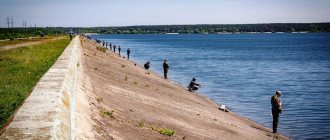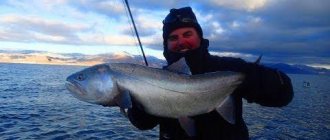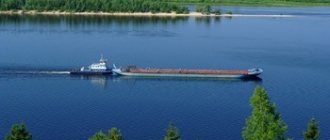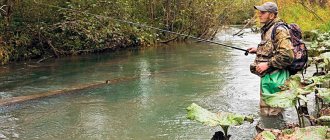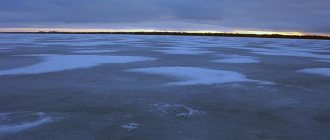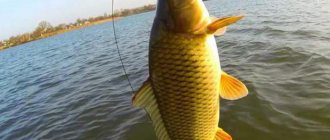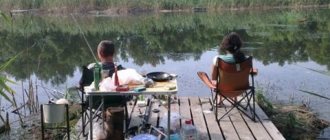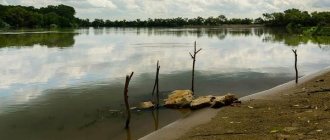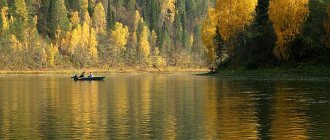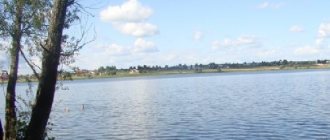deutschenglishespañolfrançaisहिन्दी
Bite forecast > Russia > Krasnodar region > Seversky district > Kryukovskoe Reservoir
Find out how the fish will bite in the Kryukovskoe Reservoir in the coming days. The bite forecast takes into account the weather, moon phase, water temperature, and seasonal fish activity.
Reservoir Kryukovskoye Reservoir on the map:
Expand the map
to zoom with the mouse wheel
Move this checkbox
| February 16 Tuesday | February 17 Wednesday | February 18 Thursday | February 19 Friday | February 20 Saturday | ||||||||||||||||
| time | night 02:00 | morning 08:00 | day 14:00 | evening 20:00 | night 02:00 | morning 08:00 | day 14:00 | evening 20:00 | night 02:00 | morning 08:00 | day 14:00 | evening 20:00 | night 02:00 | morning 08:00 | day 14:00 | evening 20:00 | night 02:00 | morning 08:00 | day 14:00 | evening 20:00 |
| Weather show weather hide weather | Mainly cloudy | Mainly cloudy | Drifting snow | heavy snowfall | heavy snowfall | Blizzard | Blizzard | light snowfall | Mainly cloudy | Partly cloudy | Partly cloudy | Partly cloudy | light snowfall | heavy snowfall | heavy snowfall in places | light wet snow | Partly cloudy | Partly cloudy | Mainly cloudy | Cloudy |
| air temperature, °C °F feels like, °C °F | −4 25° | −4 25° | −3 27° | −5 23° | −5 23° | −6 21° | −4 25° | −5 23° | −7 19° | −7 19° | −2 28° | −3 27° | −1 30° | −3 27° | +1 34° | −2 28° | −6 21° | −8 18° | −1 30° | −3 27° |
| −10 14° | −11 12° | −10 14° | −12 10° | −13 9° | −15 5° | −11 12° | −12 10° | −11 12° | −9 16° | −4 25° | −7 19° | −6 21° | −10 14° | −5 23° | −6 21° | −10 14° | −4 25° | −4 25° | ||
| water temperature, °C °F surface / depth | 1 34° / 2 36° | 1 34° / 2 36° | 1 34° / 2 36° | 1 34° / 2 36° | 1 34° / 2 36° | 1 34° / 2 36° | 1 34° / 2 36° | 1 34° / 2 36° | 1 34° / 2 36° | 1 34° / 2 36° | 1 34° / 2 36° | 1 34° / 2 36° | 1 34° / 2 36° | 1 34° / 2 36° | 1 34° / 2 36° | 1 34° / 2 36° | 1 34° / 2 36° | 1 34° / 2 36° | 1 34° / 2 36° | 1 34° / 2 36° |
| cloudiness, % | 100 | 100 | 100 | 97 | 100 | 100 | 100 | 69 | 100 | 14 | 45 | 21 | 100 | 100 | 61 | 53 | 25 | 33 | 100 | 80 |
| precipitation, mmin/6 h | 0 0 | 0 0 | 0 0 | 0.3 0.012 | 0.6 0.024 | 0.4 0.016 | 0.1 0.004 | 0 0 | 0 0 | 0 0 | 0 0 | 0 0 | 0 0 | 2.5 0.098 | 1 0.039 | 0.1 0.004 | 0 0 | 0 0 | 0 0 | 0 0 |
| wind | NE northeast | NE northeast | NE northeast | SS-E north-northeast | SS-E north-northeast | NE northeast | NE northeast | NE northeast | NE northeast | SE southeast | E-S-E east-southeast | SE southeast | SSE-E south-southeast | E-S-E east-southeast | E-S-E east-southeast | To the eastern | E-N-E east-northeast | To the eastern | To the eastern | SSE-E south-southeast |
| wind speed, m/s km/h mph / wind gusts, m/s km/h mph | 4 / 5 14 / 18 9 / 11 wind speed 4 m/s km/h mph, gusts up to 5 m/s km/h mph wind speed 14 m/s km/h mph, gusts up to 18 m/s km/h mph wind speed 9 m/s km/h mph, gusts up to 11 m/s km/h mph The waters are moderately rough. | 6 / 8 22 / 29 13 / 18 wind speed 6 m/s km/h mph, gusts up to 8 m/s km/h mph wind speed 22 m/s km/h mph, gusts up to 29 m/s km/h mph wind speed 13 m/s km/h mph, gusts up to 18 m/s km/h mph Quite a steep wave, especially on large bodies of water. | 8 / 9 29 / 32 18 / 20 wind speed 8 m/s km/h mph, gusts up to 9 m/s km/h mph wind speed 29 m/s km/h mph, gusts up to 32 m/s km/h mph wind speed 18 m/s km/h mph, gusts up to 20 m/s km/h mph Very steep waves, stormy conditions on large bodies of water. | 7 / 11 25 / 40 16 / 25 wind speed 7 m/s km/h mph, gusts up to 11 m/s km/h mph wind speed 25 m/s km/h mph, gusts up to 40 m/s km/h mph wind speed 16 m/s km/h mph, gusts up to 25 m/s km/h mph Quite a steep wave, especially on large bodies of water. | 8 / 12 29 / 43 18 / 27 wind speed 8 m/s km/h mph, gusts up to 12 m/s km/h mph wind speed 29 m/s km/h mph, gusts up to 43 m/s km/h mph wind speed 18 m/s km/h mph, gusts up to 27 m/s km/h mph Very steep waves, stormy conditions on large bodies of water. | 8 / 13 29 / 47 18 / 29 wind speed 8 m/s km/h mph, gusts up to 13 m/s km/h mph wind speed 29 m/s km/h mph, gusts up to 47 m/s km/h mph wind speed 18 m/s km/h mph, gusts up to 29 m/s km/h mph Very steep waves, stormy conditions on large bodies of water. | 8 / 9 29 / 32 18 / 20 wind speed 8 m/s km/h mph, gusts up to 9 m/s km/h mph wind speed 29 m/s km/h mph, gusts up to 32 m/s km/h mph wind speed 18 m/s km/h mph, gusts up to 20 m/s km/h mph Very steep waves, stormy conditions on large bodies of water. | 5 / 9 18 / 32 11 / 20 wind speed 5 m/s km/h mph, gusts up to 9 m/s km/h mph wind speed 18 m/s km/h mph, gusts up to 32 m/s km/h mph wind speed 11 m/s km/h mph, gusts up to 20 m/s km/h mph The waters are moderately rough. | 3 / 4 11 / 14 7 / 9 wind speed 3 m/s km/h mph, gusts up to 4 m/s km/h mph wind speed 11 m/s km/h mph, gusts up to 14 m/s km/h mph wind speed 7 m/s km/h mph, gusts up to 9 m/s km/h mph Slight water disturbance. | 1 4 2 wind speed 1 m/s km/h mph wind speed 4 m/s km/h mph wind speed 2 m/s km/h mph Water bodies are calm. | 2 7 4 wind speed 2 m/s km/h mph wind speed 7 m/s km/h mph wind speed 4 m/s km/h mph Slight water disturbance. | 3 / 4 11 / 14 7 / 9 wind speed 3 m/s km/h mph, gusts up to 4 m/s km/h mph wind speed 11 m/s km/h mph, gusts up to 14 m/s km/h mph wind speed 7 m/s km/h mph, gusts up to 9 m/s km/h mph Slight water disturbance. | 4 / 7 14 / 25 9 / 16 wind speed 4 m/s km/h mph, gusts up to 7 m/s km/h mph wind speed 14 m/s km/h mph, gusts up to 25 m/s km/h mph wind speed 9 m/s km/h mph, gusts up to 16 m/s km/h mph The waters are moderately rough. | 8 / 13 29 / 47 18 / 29 wind speed 8 m/s km/h mph, gusts up to 13 m/s km/h mph wind speed 29 m/s km/h mph, gusts up to 47 m/s km/h mph wind speed 18 m/s km/h mph, gusts up to 29 m/s km/h mph Very steep waves, stormy conditions on large bodies of water. | 6 / 7 22 / 25 13 / 16 wind speed 6 m/s km/h mph, gusts up to 7 m/s km/h mph wind speed 22 m/s km/h mph, gusts up to 25 m/s km/h mph wind speed 13 m/s km/h mph, gusts up to 16 m/s km/h mph Quite a steep wave, especially on large bodies of water. | 3 / 6 11 / 22 7 / 13 wind speed 3 m/s km/h mph, gusts up to 6 m/s km/h mph wind speed 11 m/s km/h mph, gusts up to 22 m/s km/h mph wind speed 7 m/s km/h mph, gusts up to 13 m/s km/h mph Slight water disturbance. | 2 / 4 7 / 14 4 / 9 wind speed 2 m/s km/h mph, gusts up to 4 m/s km/h mph wind speed 7 m/s km/h mph, gusts up to 14 m/s km/h mph wind speed 4 m/s km/h mph, gusts up to 9 m/s km/h mph Slight water disturbance. | 1 4 2 wind speed 1 m/s km/h mph wind speed 4 m/s km/h mph wind speed 2 m/s km/h mph Water bodies are calm. | 2 7 4 wind speed 2 m/s km/h mph wind speed 7 m/s km/h mph wind speed 4 m/s km/h mph Slight water disturbance. | 1 / 2 4 / 7 2 / 4 wind speed 1 m/s km/h mph, gusts up to 2 m/s km/h mph wind speed 4 m/s km/h mph, gusts up to 7 m/s km/h mph wind speed 2 m/s km/h mph, gusts up to 4 m/s km/h mph Water bodies are calm. |
| pressure mm. Hg Art. inch Hg Art. hPa | 759 29.88 1012 | 757 29.8 1009 | 756 29.76 1008 | 756 29.76 1008 | 756 29.76 1008 | 755 29.72 1007 | 754 29.68 1005 | 755 29.72 1007 | 756 29.76 1008 | 756 29.76 1008 | 756 29.76 1008 | 755 29.72 1007 | 753 29.65 1004 | 753 29.65 1004 | 756 29.76 1008 | 759 29.88 1012 | 763 30.04 1017 | 765 30.12 1020 | 766 30.16 1021 | 766 30.16 1021 |
| humidity, % | 62 | 57 | 56 | 73 | 83 | 85 | 69 | 74 | 83 | 86 | 52 | 75 | 83 | 96 | 90 | 90 | 93 | 91 | 72 | 81 |
| Moon phase | Young Moon age: 5 days illumination: 17% distance: 403 thousand km. | Young Moon age: 5 days illumination: 25% distance: 405 thousand km. | First quarter age: 6 days illumination: 33% distance: 405 thousand km. | First quarter age: 7 days illumination: 43% distance: 405 thousand km. | First quarter age: 8 days illumination: 52% distance: 404 thousand km. | |||||||||||||||
| moonrise—moonset | 09:47—22:49 | 10:07—23:51 | 10:29—03:00 | 10:54—00:54 | 11:23—01:57 | |||||||||||||||
| sunrise—sunset | 07:28—17:58 | 07:26—17:59 | 07:24—18:00 | 07:23—18:02 | 07:21—18:03 | |||||||||||||||
| length of day | 10:30 | 10:33 | 10:36 | 10:39 | 10:42 | |||||||||||||||
| hours of sunshine per day | 3.9 | 3.9 | 10.8 | 6.9 | 7 | |||||||||||||||
| UV index | 1 minor UV radiation | 1 minor UV radiation | 1 minor UV radiation | 1 minor UV radiation | 1 minor UV radiation | |||||||||||||||
| fish bite 0-100% | ||||||||||||||||||||
| White amur | 0 Grass carp are not biting Grass carp are found in deep places | 0 Grass carp are not biting Grass carp are found in deep places | 0 Grass carp are not biting Grass carp are found in deep places | 0 Grass carp are not biting Grass carp are found in deep places | 0 Grass carp are not biting Grass carp are found in deep places | 0 Grass carp are not biting Grass carp are found in deep places | 0 Grass carp are not biting Grass carp are found in deep places | 0 Grass carp are not biting Grass carp are found in deep places | 0 Grass carp are not biting Grass carp are found in deep places | 0 Grass carp are not biting Grass carp are found in deep places | 0 Grass carp are not biting Grass carp are found in deep places | 0 Grass carp are not biting Grass carp are found in deep places | 0 Grass carp are not biting Grass carp are found in deep places | 0 Grass carp are not biting Grass carp are found in deep places | 0 Grass carp are not biting Grass carp are found in deep places | 0 Grass carp are not biting Grass carp are found in deep places | 0 Grass carp are not biting Grass carp are found in deep places | 0 Grass carp are not biting Grass carp are found in deep places | 0 Grass carp are not biting Grass carp are found in deep places | 0 Grass carp are not biting Grass carp are found in deep places |
| Loach | 0 No loach biting Loach is found in deep places | 0 No loach biting Loach is found in deep places | 0 No loach biting Loach is found in deep places | 0 No loach biting Loach is found in deep places | 0 No loach biting Loach is found in deep places | 0 No loach biting Loach is found in deep places | 0 No loach biting Loach is found in deep places | 0 No loach biting Loach is found in deep places | 0 No loach biting Loach is found in deep places | 0 No loach biting Loach is found in deep places | 0 No loach biting Loach is found in deep places | 0 No loach biting Loach is found in deep places | 0 No loach biting Loach is found in deep places | 0 No loach biting Loach is found in deep places | 0 No loach biting Loach is found in deep places | 0 No loach biting Loach is found in deep places | 0 No loach biting Loach is found in deep places | 0 No loach biting Loach is found in deep places | 0 No loach biting Loach is found in deep places | 0 No loach biting Loach is found in deep places |
| Chub | 0 There are no chub bites. The chub is found in deep places | 0 There are no chub bites. The chub is found in deep places | 0 There are no chub bites. The chub is found in deep places | 0 There are no chub bites. The chub is found in deep places | 0 There are no chub bites. The chub is found in deep places | 0 There are no chub bites. The chub is found in deep places | 0 There are no chub bites. The chub is found in deep places | 0 There are no chub bites. The chub is found in deep places | 0 There are no chub bites. The chub is found in deep places | 0 There are no chub bites. The chub is found in deep places | 0 There are no chub bites. The chub is found in deep places | 0 There are no chub bites. The chub is found in deep places | 0 There are no chub bites. The chub is found in deep places | 0 There are no chub bites. The chub is found in deep places | 0 There are no chub bites. The chub is found in deep places | 0 There are no chub bites. The chub is found in deep places | 0 There are no chub bites. The chub is found in deep places | 0 There are no chub bites. The chub is found in deep places | 0 There are no chub bites. The chub is found in deep places | 0 There are no chub bites. The chub is found in deep places |
| Minnow | 19 No minnow bite Minnow is found in deep places | 38 Sluggish minnow bite The minnow is found in deep places | 32 Sluggish minnow bite The minnow is found in deep places | 27 There is almost no minnow bite. The minnow is found in deep places. | 15 No minnow bite Minnow is found in deep places | 30 There is almost no minnow bite. The minnow is found in deep places. | 36 Sluggish minnow bite The minnow is found in deep places | 36 Sluggish minnow bite The minnow is found in deep places | 20 No minnow bite Minnow is found in deep places | 33 Sluggish minnow bite The minnow is found in deep places | 33 Sluggish minnow bite The minnow is found in deep places | 47 Minnow bite is worse than average Minnow is found in deep places | 21 There is almost no minnow bite. The minnow is found in deep places. | 38 Sluggish minnow bite The minnow is found in deep places | 13 No minnow bite Minnow is found in deep places | 9 No minnow bite Minnow is found in deep places | 7 No minnow bite Minnow is found in deep places | 25 There is almost no minnow bite. The minnow is found in deep places. | 35 Sluggish minnow bite The minnow is found in deep places | 35 Sluggish minnow bite The minnow is found in deep places |
| Gorchak | 0 No bitterling bites Gorchak is found in deep places | 0 No bitterling bites Gorchak is found in deep places | 0 No bitterling bites Gorchak is found in deep places | 0 No bitterling bites Gorchak is found in deep places | 0 No bitterling bites Gorchak is found in deep places | 0 No bitterling bites Gorchak is found in deep places | 0 No bitterling bites Gorchak is found in deep places | 0 No bitterling bites Gorchak is found in deep places | 0 No bitterling bites Gorchak is found in deep places | 0 No bitterling bites Gorchak is found in deep places | 0 No bitterling bites Gorchak is found in deep places | 0 No bitterling bites Gorchak is found in deep places | 0 No bitterling bites Gorchak is found in deep places | 0 No bitterling bites Gorchak is found in deep places | 0 No bitterling bites Gorchak is found in deep places | 0 No bitterling bites Gorchak is found in deep places | 0 No bitterling bites Gorchak is found in deep places | 0 No bitterling bites Gorchak is found in deep places | 0 No bitterling bites Gorchak is found in deep places | 0 No bitterling bites Gorchak is found in deep places |
| Dace | 27 There is almost no bite for dace. Dace is found in deep places. | 27 There is almost no bite for dace. Dace is found in deep places. | 22 There is almost no bite for dace. Dace is found in deep places. | 22 There is almost no bite for dace. Dace is found in deep places. | 25 There is almost no bite for dace. Dace is found in deep places. | 25 There is almost no bite for dace. Dace is found in deep places. | 25 There is almost no bite for dace. Dace is found in deep places. | 25 There is almost no bite for dace. Dace is found in deep places. | 28 There is almost no bite for dace. Dace is found in deep places. | 28 There is almost no bite for dace. Dace is found in deep places. | 28 There is almost no bite for dace. Dace is found in deep places. | 33 Sluggish bite of dace Dace is found in deep places | 29 There is almost no bite for dace. Dace is found in deep places. | 26 There is almost no bite for dace. Dace is found in deep places. | 9 There is no bite for dace. Dace is found in deep places. | 6 There is no bite for dace. Dace is found in deep places. | 9 There is no bite for dace. Dace is found in deep places. | 21 There is almost no bite for dace. Dace is found in deep places. | 30 There is almost no bite for dace. Dace is found in deep places. | 30 There is almost no bite for dace. Dace is found in deep places. |
| crucian carp | 0 There is no bite for crucian carp. Crucian carp is in deep places | 0 There is no bite for crucian carp. Crucian carp is in deep places | 0 There is no bite for crucian carp. Crucian carp is in deep places | 0 There is no bite for crucian carp. Crucian carp is in deep places | 0 There is no bite for crucian carp. Crucian carp is in deep places | 0 There is no bite for crucian carp. Crucian carp is in deep places | 0 There is no bite for crucian carp. Crucian carp is in deep places | 0 There is no bite for crucian carp. Crucian carp is in deep places | 0 There is no bite for crucian carp. Crucian carp is in deep places | 0 There is no bite for crucian carp. Crucian carp is in deep places | 0 There is no bite for crucian carp. Crucian carp is in deep places | 0 There is no bite for crucian carp. Crucian carp is in deep places | 0 There is no bite for crucian carp. Crucian carp is in deep places | 0 There is no bite for crucian carp. Crucian carp is in deep places | 0 There is no bite for crucian carp. Crucian carp is in deep places | 0 There is no bite for crucian carp. Crucian carp is in deep places | 0 There is no bite for crucian carp. Crucian carp is in deep places | 0 There is no bite for crucian carp. Crucian carp is in deep places | 0 There is no bite for crucian carp. Crucian carp is in deep places | 0 There is no bite for crucian carp. Crucian carp is in deep places |
| Carp | 0 No carp biting Carp are in deep places | 0 No carp biting Carp are in deep places | 0 No carp biting Carp are in deep places | 0 No carp biting Carp are in deep places | 0 No carp biting Carp are in deep places | 0 No carp biting Carp are in deep places | 0 No carp biting Carp are in deep places | 0 No carp biting Carp are in deep places | 0 No carp biting Carp are in deep places | 0 No carp biting Carp are in deep places | 0 No carp biting Carp are in deep places | 0 No carp biting Carp are in deep places | 0 No carp biting Carp are in deep places | 0 No carp biting Carp are in deep places | 0 No carp biting Carp are in deep places | 0 No carp biting Carp are in deep places | 0 No carp biting Carp are in deep places | 0 No carp biting Carp are in deep places | 0 No carp biting Carp are in deep places | 0 No carp biting Carp are in deep places |
| Rudd | 16 There is no rudd bite The rudd is found in deep places | 25 There is almost no rudd bite The rudd is found in deep places | 19 There is no rudd bite The rudd is found in deep places | 27 There is almost no rudd bite The rudd is found in deep places | 15 No rudd bite The rudd is found in deep places | 24 There is almost no rudd bite The rudd is found in deep places | 21 There is almost no rudd bite The rudd is found in deep places | 30 There is almost no rudd bite The rudd is found in deep places | 17 There is no bite for rudd The rudd is found in deep places | 26 There is almost no rudd bite The rudd is found in deep places | 23 There is almost no rudd bite The rudd is found in deep places | 39 Sluggish bite of rudd The rudd is found in deep places | 18 No rudd bite The rudd is found in deep places | 25 There is almost no rudd bite The rudd is found in deep places | 8 No rudd bite The rudd is found in deep places | 7 There is no bite for rudd. Rudd is found in deep places. | 5 No rudd bite The rudd is found in deep places | 20 No rudd bite The rudd is found in deep places | 25 There is almost no rudd bite The rudd is found in deep places | 35 Sluggish bite of rudd The rudd is found in deep places |
| Bream | 40 Sluggish bream bite Bream is found in deep places | 40 Sluggish bream bite Bream is found in deep places | 33 Sluggish bream bite Bream is found in deep places | 33 Sluggish bream bite Bream is found in deep places | 38 Sluggish bream bite Bream is found in deep places | 38 Sluggish bream bite Bream is found in deep places | 38 Sluggish bream bite Bream is found in deep places | 38 Sluggish bream bite Bream is found in deep places | 41 Bream bite is worse than average Bream is found in deep places | 41 Bream bite is worse than average Bream is found in deep places | 41 Bream bite is worse than average Bream is found in deep places | 50 Bream bite is worse than average Bream is found in deep places | 44 Bream bite is worse than average Bream is found in deep places | 39 Sluggish bream bite Bream is found in deep places | 13 No bream bite Bream is found in deep places | 9 No bream bite Bream is found in deep places | 13 No bream bite Bream is found in deep places | 31 Sluggish bream bite Bream is found in deep places | 44 Bream bite is worse than average Bream is found in deep places | 44 Bream bite is worse than average Bream is found in deep places |
| Tench | 0 No tench is biting Tench is found in deep places | 0 No tench is biting Tench is found in deep places | 0 No tench is biting Tench is found in deep places | 0 No tench is biting Tench is found in deep places | 0 No tench is biting Tench is found in deep places | 0 No tench is biting Tench is found in deep places | 0 No tench is biting Tench is found in deep places | 0 No tench is biting Tench is found in deep places | 0 No tench is biting Tench is found in deep places | 0 No tench is biting Tench is found in deep places | 0 No tench is biting Tench is found in deep places | 0 No tench is biting Tench is found in deep places | 0 No tench is biting Tench is found in deep places | 0 No tench is biting Tench is found in deep places | 0 No tench is biting Tench is found in deep places | 0 No tench is biting Tench is found in deep places | 0 No tench is biting Tench is found in deep places | 0 No tench is biting Tench is found in deep places | 0 No tench is biting Tench is found in deep places | 0 No tench is biting Tench is found in deep places |
| lake trout | 48 Lake trout bite is worse than average Lake trout are found in deep places | 48 Lake trout bite is worse than average Lake trout are found in deep places | 40 Sluggish bite of lake trout Lake trout are found in deep places | 40 Sluggish bite of lake trout Lake trout are found in deep places | 45 Lake trout bite is worse than average Lake trout are found in deep places | 45 Lake trout bite is worse than average Lake trout are found in deep places | 45 Lake trout bite is worse than average Lake trout are found in deep places | 45 Lake trout bite is worse than average Lake trout are found in deep places | 49 Lake trout bite is worse than average Lake trout are found in deep places | 49 Lake trout bite is worse than average Lake trout are found in deep places | 49 Lake trout bite is worse than average Lake trout are found in deep places | 59 Average lake trout bite Lake trout are found in deep areas | 52 Average lake trout bite Lake trout are found in deep areas | 47 Lake trout bite is worse than average Lake trout are found in deep places | 16 Lake trout are not biting Lake trout are found in deep places | 11 Lake trout are not biting Lake trout are found in deep places | 16 Lake trout are not biting Lake trout are found in deep places | 37 Sluggish bite of lake trout Lake trout are found in deep places | 53 Average lake trout bite Lake trout are found in deep areas | 53 Average lake trout bite Lake trout are found in deep areas |
| Perch | 0 No perch biting Perch is in deep places | 40 Sluggish perch bite Perch is in deep places | 40 Sluggish perch bite Perch is in deep places | 40 Sluggish perch bite Perch is in deep places | 0 No perch biting Perch is in deep places | 52 Average perch bite Perch is in deep places | 52 Average perch bite Perch is in deep places | 52 Average perch bite Perch is in deep places | 0 No perch biting Perch is in deep places | 50 Perch bite is worse than average Perch is in deep places | 50 Perch bite is worse than average Perch is in deep places | 56 Average perch bite Perch is in deep places | 0 No perch biting Perch is in deep places | 48 Perch bite is worse than average Perch is in deep places | 16 No perch biting Perch is in deep places | 11 No perch biting Perch is in deep places | 0 No perch biting Perch is in deep places | 33 Sluggish perch bite Perch is in deep places | 47 Perch bite is worse than average Perch is in deep places | 47 Perch bite is worse than average Perch is in deep places |
| Roach | 25 There is almost no roach bite Roach is found in deep places | 49 Roach bite is worse than average Roach is found in deep places | 41 Roach bite is worse than average Roach is found in deep places | 41 Roach bite is worse than average Roach is found in deep places | 24 There is almost no roach bite Roach is found in deep places | 47 Roach bite is worse than average Roach is found in deep places | 47 Roach bite is worse than average Roach is found in deep places | 47 Roach bite is worse than average Roach is found in deep places | 26 There is almost no roach bite Roach is found in deep places | 51 Average roach bite Roaches are found in deep places | 51 Average roach bite Roaches are found in deep places | 61 Not a bad bite for roaches Roaches are found in deep places | 27 There is almost no roach bite Roach is found in deep places | 49 Roach bite is worse than average Roach is found in deep places | 16 No roaches biting Roaches are in deep places | 11 No roaches biting Roaches are in deep places | 8 No roaches biting Roaches are found in deep places | 38 Sluggish biting of roaches Roaches are found in deep places | 55 Average roach bite Roaches are found in deep places | 55 Average roach bite Roaches are found in deep places |
| Podust | 9 There is no bite for the underdust The underdust is found in deep places | 47 Podust bite is worse than average Podust is found in deep places | 25 There is almost no bite from the underdust. The underdust is found in deep places. | 32 Sluggish bite of the underdust The underdust is found in deep places | 8 There is no bite for the underdust The underdust is found in deep places | 41 Podust bite is worse than average Podust is found in deep places | 29 There is almost no bite from the underdust The underdust is located at a shallow depth | 41 Podust bite is worse than average Podust is found in deep places | 9 There is no bite for the underdust The underdust is found in deep places | 31 Sluggish bite of the underdust The underdust is found in deep places | 20 There is no bite for the underdust The underdust is located in deep places | 53 Average bite of podust Podust is found in deep places | 10 There is no bite for the underdust The underdust is located in deep places | 46 Podust bite is worse than average Podust is found in deep places | 10 There is no bite for the underdust The underdust is located in deep places | 10 There is no bite for the underdust The underdust is located in deep places | 3 There is no bite for the underdust The underdust is found in deep places | 23 There is almost no bite from the underdust. The underdust is found in deep places. | 21 There is almost no bite from the underdust. The underdust is found in deep places. | 30 There is almost no bite from the underdust. The underdust is found in deep places. |
| Rotan | 21 There is almost no bite for rotan. Rotan is found in deep places. | 21 There is almost no bite for rotan. Rotan is found in deep places. | 21 There is almost no bite for rotan. Rotan is found in deep places. | 30 There is almost no bite for rotan. Rotan is found in deep places. | 24 There is almost no bite for rotan. Rotan is found in deep places. | 27 There is almost no bite for rotan. Rotan is found in deep places. | 27 There is almost no bite for rotan. Rotan is found in deep places. | 38 Sluggish bite of rotan Rotan is found in deep places | 26 There is almost no bite for rotan. Rotan is found in deep places. | 26 There is almost no bite for rotan. Rotan is found in deep places. | 26 There is almost no bite for rotan. Rotan is found in deep places. | 41 Rotan bite is worse than average Rotan is found in deep places | 31 Sluggish bite of rotan Rotan is found in deep places | 25 There is almost no bite for rotan. Rotan is found in deep places. | 8 There is no bite for rotan. Rotan is found in deep places. | 8 There is no bite for rotan. Rotan is found in deep places. | 7 There is no bite for rotan Rotan is found in deep places | 17 There is no bite for rotan Rotan is found in deep places | 24 There is almost no bite for rotan. Rotan is found in deep places. | 35 Sluggish bite of rotan Rotan is found in deep places |
| Zander | 20 No pike perch biting Pike perch is in deep places | 23 There is almost no pike perch bite. Pike perch is found in deep places | 20 No pike perch biting Pike perch is in deep places | 25 There is almost no pike perch bite. Pike perch is found in deep places | 25 There is almost no pike perch bite. Pike perch is found in deep places | 32 Sluggish bite of pike perch Pike perch is in deep places | 26 There is almost no pike perch bite. Pike perch is found in deep places | 29 There is almost no pike perch bite. Pike perch is found in deep places | 25 There is almost no pike perch bite. Pike perch is found in deep places | 28 There is almost no pike perch bite. Pike perch is found in deep places | 25 There is almost no pike perch bite. Pike perch is found in deep places | 31 Sluggish pike perch bite Pike perch is in deep places | 30 There is almost no pike perch bite. Pike perch is found in deep places | 27 There is almost no pike perch bite. Pike perch is found in deep places | 8 There is no bite for pike perch. Pike perch is in deep places. | 6 No pike perch biting Pike perch is in deep places | 7 There is no bite for pike perch. Pike perch is in deep places. | 18 There is no bite for pike perch. Pike perch is in deep places. | 24 There is almost no pike perch bite. Pike perch is found in deep places | 26 There is almost no pike perch bite. Pike perch is found in deep places |
| Bleak | 0 No bleak bite Bleak is found in deep places | 0 No bleak bite Bleak is found in deep places | 0 No bleak bite Bleak is found in deep places | 0 No bleak bite Bleak is found in deep places | 0 No bleak bite Bleak is found in deep places | 0 No bleak bite Bleak is found in deep places | 0 No bleak bite Bleak is found in deep places | 0 No bleak bite Bleak is found in deep places | 0 No bleak bite Bleak is found in deep places | 0 No bleak bite Bleak is found in deep places | 0 No bleak bite Bleak is found in deep places | 0 No bleak bite Bleak is found in deep places | 0 No bleak bite Bleak is found in deep places | 0 No bleak bite Bleak is found in deep places | 0 No bleak bite Bleak is found in deep places | 0 No bleak bite Bleak is found in deep places | 0 No bleak bite Bleak is found in deep places | 0 No bleak bite Bleak is found in deep places | 0 No bleak bite Bleak is found in deep places | 0 No bleak bite Bleak is found in deep places |
| Pike | 0 No pike biting Pike are in deep places | 38 Sluggish pike bite Pike is in deep places | 30 There is almost no pike biting Pike are in deep places | 34 Sluggish pike bite Pike is in deep places | 0 No pike biting Pike are in deep places | 44 Pike bite is worse than average Pike is in deep places | 39 Sluggish pike bite Pike is in deep places | 48 Pike bite is worse than average Pike is in deep places | 0 No pike biting Pike are in deep places | 43 Pike bite is worse than average Pike is in deep places | 34 Sluggish pike bite Pike is in deep places | 53 Average pike bite Pike are in deep places | 0 No pike biting Pike are in deep places | 45 Pike bite is worse than average Pike is in deep places | 12 No pike biting Pike are in deep places | 10 No pike biting Pike are in deep places | 0 No pike biting Pike are in deep places | 28 There is almost no pike biting Pike are in deep places | 32 Sluggish pike bite Pike is in deep places | 40 Sluggish pike bite Pike are in deep places |
| Ide | 13 There is no bite for the ide. The ide is found in deep places. | 25 There is almost no bite for ide. The ide is found in deep places. | 19 There are no biting ides. The ides are found in deep places. | 23 There is almost no bite for the ide. The ide is found in deep places. | 13 There is no bite for the ide. The ide is found in deep places. | 26 There are almost no bites for ide. The ide is found in deep places. | 21 There are almost no bites for ide. The ide is found in deep places. | 24 There are almost no bites for ide. The ide is found in deep places. | 13 There is no bite for the ide. The ide is found in deep places. | 26 There are almost no bites for ide. The ide is found in deep places. | 23 There is almost no bite for the ide. The ide is found in deep places. | 31 Sluggish bite of ide The ide is found in deep places | 14 There is no bite for the ide. The ide is found in deep places. | 25 There is almost no bite for ide. The ide is found in deep places. | 8 There are no biting ides. The ides are found in deep places. | 6 There are no biting ides. The ides are found in deep places. | 4 There are no biting ides. The ides are found in deep places. | 19 There are no biting ides. The ides are found in deep places. | 25 There is almost no bite for ide. The ide is found in deep places. | 28 There is almost no ide bite. The ide is found in deep places |
| Ruff | 41 The bite of the ruff is worse than average The ruff is found in deep places | 41 The bite of the ruff is worse than average The ruff is found in deep places | 41 The bite of the ruff is worse than average The ruff is found in deep places | 41 The bite of the ruff is worse than average The ruff is found in deep places | 46 The bite of the ruff is worse than average The ruff is found in deep places | 52 Average bite of the ruff The ruff is found in deep places | 52 Average bite of the ruff The ruff is found in deep places | 52 Average bite of the ruff The ruff is found in deep places | 50 The bite of the ruff is worse than average The ruff is found in deep places | 50 The bite of the ruff is worse than average The ruff is found in deep places | 50 The bite of the ruff is worse than average The ruff is found in deep places | 57 Average bite of the ruff The ruff is found in deep places | 60 Average bite of the ruff The ruff is found in deep places | 48 The bite of the ruff is worse than average The ruff is found in deep places | 16 There is no bite for the ruff The ruff is found in deep places | 11 There is no bite for the ruff The ruff is found in deep places | 14 There is no bite for the ruff The ruff is found in deep places | 33 Sluggish bite of the ruff The ruff is found in deep places | 47 The bite of the ruff is worse than average The ruff is found in deep places | 47 The bite of the ruff is worse than average The ruff is found in deep places |
| Add: | ||||||||||||||||||||
What is famous for the Kryukov Reservoir near Krasnodar?
The south of Russia is extremely rich and interesting in attractions; numerous waterways, wild mountain rivers, quiet, calm ponds and lakes, and countless streams occupy an important place. But often here man-made objects surpass natural ones in beauty, plus their practical purpose is taken into account, not only the aesthetic component. For example, the Kryukovskoye Reservoir, which is one of the largest in the region, is called, and not without reason, one of the most picturesque corners of the Krasnodar Territory.
CONTENT
Primorsko-Akhtarsk
Guest House "Hunter and Fisherman"
Address: Sadki village, st. Chapaeva, 226a
Coordinates: 45.929249, 38.098946.
Accommodation in comfortable rooms for 2-4 people. Kitchen for cooking. Convenient parking for cars. Boat park, as well as rental equipment. There is access to the estuary, where a wide variety of fish is found.
Base "Grigorievsky Kuren"
Address: Lebedi village.
Coordinates: 45°56′30″N (45.941624) 38°9′44″E (38.162203)
Comfortable rooms with everything you need for your stay. Kitchen, place to store fish. The base accommodates 9 people. On the territory there are gazebos, barbecue facilities, sauna, billiards. You can rent a boat and gear. You can fish in one of two stocked ponds.
Tourist base "Kirpili"
Address: Primorsko-Akhtarsk, st. 50 years of October, 124.
The reservoir is rich in fish, especially carp, pike and crucian carp, bream and perch are a little less common, and the luckiest ones will be able to catch catfish, pike perch or asp. Accommodation in rooms for 2-5 people or in cottages. There is a kitchen and a cafe. Anyone can rent a boat and equipment if necessary. In addition, you can go water skiing at the base.
History of creation and geography
Historical sketch
Like other water resources of this type, the Kryukovskoe reservoir was built in the 60s. last century. This was due to a number of reasons:
- The construction project was aimed at reducing the level of leashes on local rivers, such as Akhtyr, Bugai, Peschanka, etc.
- Filled with excess flood water, the artificial lake was supposed to become a reservoir for irrigating farmland and meeting the technical needs of the region.
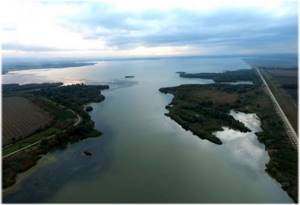
The reservoir was one of the last to be built among the network of artificial reservoirs in the Kuban; its construction began in 1969. According to the recollections of the workers, this was not an easy task. The area where it was planned to build the bowl, near the floodplains and flooded areas, was a real swamp, where it was even difficult to move. Truly it was hard labor - the equipment was stuck in the mud, people worked to the limit of human capabilities, and the structure moved slowly and with long breaks during the rains.
It took more than two years to clear the territory, but with the construction of the dam, when the bowl was completed, despite its length, things moved much faster. The main work was completed in 1972 and after an inspection by the hydraulic supply commission, the facility was put into operation in the same year.
Geographical and natural features
Even though it is not the largest of the reservoirs in the Krasnodar Territory, Kryukovskoye provides technical water supply to a vast territory. And this is about 8,000 hectares of the local irrigation system, more than 45,000 hectares of arable land, and the Kryukov fishery, which has not been very actively exploited lately.
The reservoir has an irregular oval shape, elongated from southwest to northeast, with a strongly elongated edge at the western end. Its length is 8 km and its width is 5.7 km, it is quite shallow, with an average depth of only 3.5 m. The total area of its basin is approximately 45,000 square meters. m, it holds 203 million cubic meters of water. The natural-man-made object is filled with 6 rivers:
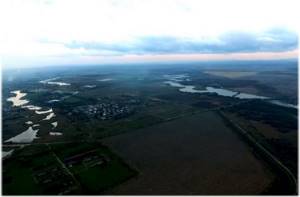
It does not have its own spillway; as a result, excess water is diverted to the Varnavinskoye reservoir, located next door. Of all the similar ones in the Krasnodar region, Kryukovskoe is the most multifunctional. A dam was built here, encircling it on three sides, with a length of 23 km; there are water intake, ice protection, fish protection and other structures.
Varnavo-Kryukovskaya irrigation system
R. A. Mnatsekanov, P. A. Tilba.
Square
54,720 hectares, including water surface 7,920 hectares; land 46,800 hectares, including farmland 46,380 hectares, forest 420 hectares.
a brief description of
An irrigation system that includes canals and rice paddies, the banks of which are covered with steppe or wetland vegetation, as well as two large artificial reservoirs: the Kryukovskoye and Varnavinskoye reservoirs.
Ramsar Criteria
2, 4, 5.
Criterion 2: The site plays a certain role in maintaining the white-tailed eagle population, both during the breeding season and during migration and wintering. According to the average winter bird counts of 2003-2006. Up to 174 white-tailed eagles were recorded on the site (Mnatsekanov and others).
Criterion 4: The site is one of the wintering centers for waterfowl, which is provided by a diverse and stable food supply and the availability of places necessary for rest.
The proximity of large reservoirs and the check system, in which a large amount of crop residues formed during the harvesting of grain crops is stored, determines the optimal conditions for the mass wintering of birds.
Criterion 5: In winter, in the water area of reservoirs alone, there were up to 21 species of waterfowl and semi-aquatic birds, the number of which in 2003 amounted to 62,668 birds, in 2004 - 70,191, in 2005 - 33,642, in 2006 - 69,790 (Mnatsekanov and others).
Location
Krasnodar region. The site is located on the left bank of the river. Kuban, between the cities of Krasnodar, Krymsk and Slavyansk. The shortest distance from the boundaries of the land to the city of Krasnodar is 15 km, to the city of Krymsk - 5 km, to the city of Slavyansk - 10 km.
Physiographic characteristics
The wetland is located within the Trans-Kuban Plain (Kuban Sloping Plain), which slopes from the foot of the Greater Caucasus to the Kuban in the northern and northwestern directions (Nagalevsky, Chistyakov, 2001). The terrain is flat, complicated by canals and dams of the irrigation system and the shafts of the Kryukovsky and Varnavinsky reservoirs.
During the construction of the rice system, the terrain was transformed by territorial planning. The site is located within the Western Kuban trough. Modern deposits of the Quaternary system, belonging to the Cenozoic group of rocks, are common on the site.
In the system of geomorphological zoning, the site belongs to deltaic alluvial modern plains, which are structural formations of the Azov low-lying delta plain, which is part of the geomorphological province of Ciscaucasia (Dumitrashko, 1966).
There are two large reservoirs on the site: Varnavinskoye and Kryukovskoye, which are used mainly for irrigation and cutting off high floods. Together with the Krasnodar Reservoir. and the embankment system of the Kuban and Protoka rivers, they are part of a single water management complex for flood protection of the Lower Kuban. Varnavinskoye Reservoir
was built by diking a group of Abinsk-Seversky estuaries and adjacent lands in 1969, put into operation in 1971. The length of the reservoir is 11 km, the average width is 4 km, the total area is 39 km2. The volume of water during NPG is 40.0 million m3, with an average depth of 1.0 m. The Varnavinsky discharge canal drains water from the reservoir and Trans-Kuban rivers into the river.
Kuban near the station Varenikovskaya. The reservoir is intended to protect the territory from catastrophic floods on the Trans-Kuban rivers (Abin, Adagum, Kuafo, Shibs, Shibsh), as well as to provide water to the Varnavinsk irrigation system. Currently used as a fishing pond.
Kryukovskoye Reservoir was built in 1967-1972.
and was put into operation in 1972. It is formed by water barrier dams that include the Kryukovsky estuary and part of the adjacent coastal lands into the bowl of the reservoir. The main parameters of the reservoir: length - 8.0 km, average width - 5.7 km, area - 40.2 km2. Total volume: at MSL (elevation 16.50 m) - 203 million m3, at NSL (elevation 14.40 m) - 111 million m3.
Excess water from it is discharged through a discharge structure through a canal into the Varnavinskoye Reservoir. Purpose of the Kryukovsky Reservoir. — drainage of the Trans-Kubansky floodplain, regulation of river flow, irrigation of agricultural crops, including rice.
Soils are represented by the following types: meadow-chernozem, meadow-chernozem compacted and merged, meadow-chernozem, meadow. Currently, the soils used in rice crop rotation, due to the specificity of the processes occurring in them, are classified as rice soils.
The construction of rice systems was accompanied by a change in the initial morphological structure of soils as a result of the transformation of meso- and microrelief. A special feature of rice soils is their water and air regimes.
During the warm period of the year, a swamp regime is artificially created in rice fields, which, due to a lack of oxygen, leads to a change from oxidative processes to reduction processes, resulting in a disruption of humus formation.
The profile of rice soils shows the presence of abundant hydromorphic features in the arable horizon (rusty and ocher spots, veins), destruction of the structure occurs (the pore space is deformed and replaced by cracks) and over-compaction of the subarable horizons.
These processes form an artificial analogue of meadow-bog varieties from various initial soil types of the site (Valkov et al., 1995; Solyanik, 2004).
The site is part of the climatic province of the Azov-Kuban Plain, which belongs to the climatic region of the Northern slope of the Greater Caucasus and the Ciscaucasia plain. 500-600 mm of precipitation falls on the site. The July isotherm is 22-23°C, January -1-2°C. The predominant wind direction in July is southeast, in January it is east-west.
The wetland's drainage basin is represented by the mountainous and foothill territories of the Western Caucasus and the sloping foothill Trans-Kuban plain. The altitude of the area varies from 6 to 905 m above sea level. m. (Mount Thab).
Soil-forming rocks are represented by Holocene and modern alluvial and alluvial-estuary deposits of lowland rivers, Pleistocene alluvial deposits of lowland rivers with a cover of loess-like rocks, Eocene, Paleocene, Cretaceous and Upper Jurassic deposits of the mid-mountain belt.
The soil cover includes the following types: meadow-chernozem, meadow-chernozem compacted and merged, meadow-chernozem, meadow, leached chernozem drained low-humus heavy-duty, dark gray and gray forest-steppe, dark gray and gray forest, brown forest, brown forest podzolized, low-power soddy-carbonate rice soils (Valkov et al., 1995; Solyanik, 2004).
The territory is used in agricultural production for growing grain and fodder crops, horticulture and viticulture. Livestock farming is developed in the described area. The water areas of reservoirs are fishing grounds. The climate is temperate continental.
The importance of the land in the natural water cycle
Reservoirs play an important role in regulating water exchange in the Lower Kuban.
Environmental parameters
The banks and shallow waters of reservoirs are overgrown with macrophytic wetland vegetation.
Valuable flora
The most widespread complex of wetland vegetation is found on the site.
Macrophytic wetland vegetation growing along the banks of reservoirs, canals and estuaries of rivers flowing into reservoirs is represented by common reed, narrow-leaved and broad-leaved cattails.
In these communities, swamp kuga, plantain chastuha, umbrella susak, and various types of sedges also grow. On the dams of the check system and reservoirs there are ground reed grass, creeping wheatgrass, meadow grass, and common yarrow.
Representatives of the group of ruderal plants are often found on the site: ragwort, field sow thistle, prickly thistle, etc.
Within the site there are small areas of broad-leaved forest, the predominant species of which are pedunculate oak, poplar, field maple, and tall ash.
Valuable fauna
The role of the area as a nesting site for birds. The territory of the site is a place for the reproduction of waterfowl and semi-aquatic bird species. On the trees growing on the shore of the Kryukovsky Reservoir, there is a colony of storks numbering 70-100 pairs, in which the gray heron and night heron breed (Belik, Dinkevich, 2004). The role of the area as a wintering place for birds.
The site is a traditional mass wintering site for waterfowl. Anseriformes. The most numerous wintering group. During the period of mid-winter surveys, the number of representatives of the order in different years varied from 33,488 (2005) to 69,182 (2004) individuals. (Mnatsekanov et al., in press - a, b).
Swans are found regularly in the winter; their maximum number was noted in 2006 - 1,060 swans. The whooper swan is common; 634 were counted in 2004, and 276 birds in 2005. The mute swan is more rare, the maximum recorded number was 116 in 2004, and 154 in 2006. Geese, gray and white-fronted, spend the winter on the site.
Their numbers increase during severe winters; for example, in January 2006, 1,143 birds were counted on the site. Of the ducks in the wintering area, the mallard dominates: in 2005, 32,800 were counted, in 2004 - 68,240.
In small numbers in winter, shelduck, teal, pintail, wigeon, red-headed pochard, sea duck, tufted duck, chickweed, and long-nosed merganser are observed. Other species of waterfowl and shorebirds. The most characteristic species include the great grebe, great cormorant, coot, and laughing gull.
The role of the area as a habitat for rare and endangered bird species. The shelduck is a rare wintering species of the described area. The white-tailed eagle is a regularly wintering species that forms mass aggregations in severe winters. The role of the site for the reproduction of fish stocks.
The composition of the ichthyofauna of the site includes 25 species of fish.
The Varnavinsky and Kryukovsky reservoirs are inhabited by representatives of the native ichthyofauna (carp, roach, perch, golden carp, etc.) and acclimatized species (silver carp - white and bigheaded, grass carp). The largest numbers are created by low-value fish species (roach, silver bream, silver crucian carp), while the number of valuable species (carp, bream, pike perch) is small.
Social and cultural significance of the site
Socially, the land is of great importance as a flood control structure, reducing the likelihood of flooding of areas in the lower reaches of the river. Kuban. The land area is used for agricultural production and fishing. It has scientific, historical and cultural significance, as it is the site of archaeological finds from the Bronze Age.
Land use
On the site, the main activity is growing crops and fishing; In the surrounding area there is agriculture and livestock raising.
Factors negatively affecting the condition of the land
Exploration and production of hydrocarbon raw materials.
Environmental measures taken
Does not require special security measures.
Proposed environmental measures
Preservation of the existing land use regime.
Scientific research
The territory of the site has not been sufficiently studied.
In recent years, special mid-winter censuses of waterfowl have been conducted as part of the Wetlands International project on the Central Asian Flyway, funded by the Ministry of Agriculture, Nature and Food of the Netherlands. There are the necessary opportunities for studying and monitoring biota: proximity to regional and regional centers, and topographic features allow for effective scientific research.
Environmental education
Not currently available. It is possible to organize ecological trails for the purpose of observing migrating and wintering birds.
Recreation and tourism
The site is not used for tourism purposes, however, on its territory and in the surrounding area there are Bronze Age burials, which, if properly secured, will contribute to the development of historical and cultural education. Recreational pressures on the habitats of plants and animals are associated with hunting, fishing and recreational fishing.
Jurisdiction
Administrations of the Abinsk, Crimean, Seversky districts of the Krasnodar Territory.
Site management body
There is no single authority for managing the land. Office of Rosprirodnadzor for the Krasnodar Territory (350063, Krasnodar, Krasnaya St., 19).
Recreation and fishing on the Kryukov Reservoir
Of course, you won’t find a large crowd of tourists here, but there are a lot of vacationers, especially in the summer months. The reservoir is located in a quiet, calm rural area, among endless fields, flowering meadows, dense forests and a great variety of clean, cool ponds.

Coming here, you immediately plunge headlong into this atmosphere of peace and carefree leisurelyness, you feel harmony with nature and the outside world, so desirable, but inaccessible in the “concrete Paradise”.
This is precisely why most visitors come to these beautiful places, looking for relaxation rather than noisy entertainment. If you wish, on the banks you can hunt small game or waterfowl, which are abundant in the floodplains, pick mushrooms in shady forests, sunbathe in the blessed southern sun, swim or sit with a fishing rod.
What is interesting about fishing?
But the main and most exciting thing that the Kryukov Reservoir has to offer is fishing, and in such a way that it will not leave indifferent even those who have always treated it without much enthusiasm. The Krasnodar region is generally famous for this type of leisure, but here fishing is something incomparable.
Fortunately, there is fish for every taste, and it is found in large quantities, especially many predatory species. Local pike grow up to 6 kg or more in weight, carp and catfish are simply giants. The following are also found in abundance here:
- carp,
- crucian carp,
- gudgeon,
- silver carp,
- White amur,
- bream,
- roach,
- rudd,
- perch,
- pike perch and other types of fish.
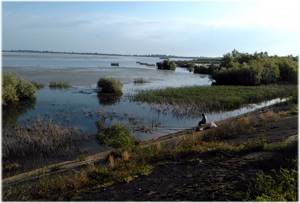
In addition, you can directly rent a boat and gear, buy feeding and bait. In a word, the Kryukov Reservoir is a paradise for fishermen; all conditions have been created for them. In particular, those coming from afar will be able to comfortably stay at the Lviv Ponds tourist center or any other; there are half a dozen of them in the area of the reservoir, where they have everything they need for a comfortable and pleasant leisure time - be it alone, or with friends, or with family.
Kryukovskoye Reservoir, Krasnodar region, Russia
You can plot a route for your car by entering the name of the place from where you want to leave and where to get there. Enter the names of points in the nominative case and in full, with the name of the city or region separated by a comma. Otherwise, the online route map may show the wrong path.
The free Yandex map contains detailed information about the selected area, including the boundaries of regions, territories and regions of Russia.
In the “layers” section, you can switch the map to “Satellite” mode, then you will see a satellite image of the selected city.
The “People's Map” layer shows metro stations, airports, names of neighborhoods and streets with house numbers. This is an online interactive map - it cannot be downloaded.
Nearest hotels (hotels, hostels, apartments, guest houses)
Five nearby hotels are shown above. Among them there are both regular hotels and hotels with several stars, as well as cheap accommodation - hostels, apartments and guest houses. These are usually private economy class mini-hotels. The hostel is a modern hostel.
An apartment is a private apartment for daily rent, and a guest house is a large private house, where the owners themselves usually live and rent out rooms for guests. You can rent a guest house with an all-inclusive service, a bathhouse and other attributes of a good holiday. Check with the owners for details here.
Usually hotels are located closer to the city center, including inexpensive ones, near the metro or train station. But if this is a resort area, then the best mini-hotels, on the contrary, are located further from the center - on the seashore or river bank.
You can find out the price of your stay by specifying your arrival and departure dates. You can book a room and see additional photos of the hotel, read customer reviews and find out the exact address and telephone number on the partner’s official website, which you will be taken to by clicking on the button that appears after specifying the dates.
Nearest airports
| Type | Name | Code | City | Code | Distance |
| Airport | Pashkovsky | KRR | Krasnodar (RU) | KRR | 53 km. |
| Airport | Gelendzhik | GDZ | Gelendzhik (RU) | GDZ | 63 km. |
| Airport | Krymsk | NOI | Novorossiysk (RU) | NOI | 72 km. |
| Airport | Vityazevo | AAQ | Anapa (RU) | AAQ | 105 km. |
| Airport | Adler – Sochi | A.E.R. | Adler (RU) | A.E.R. | 209 km. |
| Airport | Berdyansk | ERD | Berdyansk (UA) | ERD | 247 km. |
You can choose one of the nearest airports and buy a plane ticket without leaving your seat. The search for the cheapest air tickets takes place online and the best offers are displayed to you, including for direct flights.
As a rule, these are electronic tickets for a promotion or discount from many airlines. Having selected the appropriate date and price, click on it and you will be taken to the company’s official website, where you can book and buy the required ticket.
Nearest bus stations, railway stations, bus stops
| Name | Type | Transport | Distance | Schedule |
| Mikhailovskoye, center | bus stop | bus | 3 km. | Schedule |
| Ananyevsky, center | bus stop | bus | 4 km. | Schedule |
| Lvovskoe, store | bus stop | bus | 6 km. | Schedule |
| Lvovskoe, center | bus stop | bus | 6 km. | Schedule |
| Sandy, track | bus stop | bus | 8 kilometers. | Schedule |
| Porono-Pokrovsky | bus stop | bus | 11 km. | Schedule |
| Fedorovskaya, center | bus stop | bus | 12 km. | Schedule |
| Black Sea | stopping point | train | 12 km. | Schedule |
| Hubl | station | train | 12 km. | Schedule |
| Ilskaya | station | train | 12 km. | Schedule |
| Chernomorsky, highway | bus stop | bus | 12 km. | Schedule |
| Ekaterinovsky, center | bus stop | bus | 13 km. | Schedule |
| Krasnooktyabrsky, highway | bus stop | bus | 13 km. | Schedule |
| Fedorovsky hydroelectric complex | bus stop | bus | 14 km. | Schedule |
| Black Sea | bus stop | bus | 14 km. | Schedule |
| Ilsky | bus stop | bus | 14 km. | Schedule |
| Mingrelskaya, center | bus stop | bus | 14 km. | Schedule |
| Prikubansky, highway | bus stop | bus | 15 km. | Schedule |
| Kholmskaya | stopping point | train | 16 km. | Schedule |
| Pokrovsky, turn | bus stop | bus | 16 km. | Schedule |
| Severskaya | station | train | 17 km. | Schedule |
| Kholmsky | bus station | bus | 18 km. | Schedule |
| Maryanskaya, dachas | bus stop | bus | 18 km. | Schedule |
| Maryanskaya, turn | bus stop | bus | 18 km. | Schedule |
| Severskaya, bus station | bus stop | bus | 18 km. | Schedule |
| Kholmsky, “The Fair” | bus stop | bus | 18 km. | Schedule |
| Akhtyrskaya | station | train | 18 km. | Schedule |
| Afipsip | bus stop | bus | 19 km. | Schedule |
Data provided by the Yandex.Schedules service
Source: https://www.xn——7kcblghe7b1a1bya.xn--p1ai/?map=48000
Fishing and relaxation on Kryukovsky Pond
Information
FEEDER FOR BEGINNERS What is a feeder. We can say that the feeder is a more modern model of a regular donkey. So to speak, the next stage of evolution. Of course, the feeder has a number of advantages over conventional bottom tackle. Show in full... And it would be a sin for a true fishing enthusiast not to master this promising innovation and not to use all its properties. Feeder gear device
How the feeder gear is structured. Let's start with the rod. Feeder rods vary in length, action and test. Well, the length is clear. The action of a rod is its ability to bend when casting bait and landing fish. Based on this feature, fishing rods can be roughly divided into three groups. Slow action rods bend into a smooth arc during operation, starting from the handle. Medium action rods do not bend so smoothly; the bend starts approximately from the middle of the rod. Fast action rods bend only at their tip. A rod test is, roughly speaking, an indicator of its strength and sensitivity. The test is written in two numbers. The first number tells you the minimum weight of the bait that can be felt well when casting. The second number shows the maximum weight of the nozzle that can be used when casting without damaging the rod. What you need to know when choosing your first feeder rod. For different fishing conditions and for different bodies of water, craftsmen select different models of fishing rods. The choice mainly depends on the body of water in which you are going to fish. The larger the body of water, the longer the rod. If there is a strong current, you will have to use a heavy feeder so that it does not blow away - therefore, the stronger the current, the greater the rod test required. In short, for a river the test is 100-120 g, for a reservoir, lake, pond - up to 60 g. For a beginner, it will be enough to choose something universal. Not too expensive rod, 3.5 to 4 meters long, 40-90 gr., fast action. There's no need to skimp on the reel. You need to immediately buy a good one, limited only by your budget. Fishing with a feeder Let's figure out why a feeder is effective. Feeder gear allows the fisherman to fish in places remote from the shore (40-50m), where large fish do not behave as carefully as in the coastal zone. Moreover, the fisherman himself remains unnoticed, on the shore. A fisherman in a boat usually alerts the fish. The feeder, unlike a regular donkey, allows you to choose a promising fishing spot. Before starting fishing, an experienced angler makes several test casts without a feeder, using a special marker, carefully studying the bottom topography. Bottom holes, deep dumps, and edges are considered promising. So, having found a promising place, all that remains is to feed it well. The feeder makes it possible to deliver new portions of bait with great precision to the selected location, close to the bait. To acquire the skill of accurately throwing tackle at a target, you will have to practice well. An experienced fisherman feeds the area quite compactly, constantly throwing bait into a circle with a diameter of about 2 meters. When casting correctly, a dense feeding spot is formed on the bottom, in which the bait is located. This greatly increases the chances of getting a bite. To increase the accuracy of casting, experts advise choosing a landmark on the opposite bank - a tree or bush, a stone, a hill, something that stands out. Throwing the tackle is done from the same place, aiming each time at the selected landmark. The casting distance is controlled by fixing the fishing line in a special clamp on the reel. Having completed the first successful cast, the fishing line is inserted into a special clamp on the reel spool, now on subsequent casts the range will be the same all the time. The tactics of fishing with a feeder are fundamentally different from fishing with a regular donk. If when fishing with classic bottom tackle a large number of rods is welcome, then when fishing with a feeder, a beginner only needs one rod. Feeder, unlike donkey, is active fishing. Here you can’t stand still for a long time at the thrown tackle and wait for a bite. If there is no bite, you need to react quickly. The absence of bites is a signal to action. This indicates that you need to change the groundbait or bait, change the flavor, and change the casting distance. And it happens that the place of fishing. The main thing is to react in time and not be afraid to experiment. Be sure to remember successful decisions - this provides rich experience for future successes.
Carp feeds on plant and animal food. He happily eats crustaceans, dragonfly larvae, and caddisflies. Doesn't refuse shellfish. If fishing takes place from a boat or other watercraft, but there are no bites for a long time, experienced fishermen advise paying attention to places near algae located near shallow depths.
Oddly enough, but using a fishing rod to catch carp is a rare phenomenon in comparison with bottom gear. But the fishing process is more exciting. If there are deep places near the shore, more than 4 meters, experts advise fishing them. The sinker and float are installed on a sliding shooting range in the form of an olive. You need to adjust the float to the depth at the fishing spot and secure it with a locking knot. This is done so that it does not move towards the rod. The sinker is held in place by a bead. You can use a rubber stopper.
When caught on a fishing rod 4.5 meters long, a leash 10-15 cm long is placed. You can use a fishing line or 0.3 mm cord. The casting range will be 50-80 meters. An inertial reel with a line on a spool of at least 100 meters is recommended. Special hooks for carp No. 8 with a sting and a shortened shank.
Anapa district
Recreation center "Fisherman's Hut"
Address: Sukko village, Baidasarovskaya Shchel.
Coordinates: 44°47′29″N (44.791297), 37°24′8″E (37.402255).
There is a good road leading to the base. There are two huge ponds on the territory, which are stocked with fish three times a year (carp, buffalo, crucian carp, carp, grass carp). The minimum weight of the fish is at least 0.5 kg. There are all conditions for recreation, and nearby you can ride horses or watch a knightly tournament.
Carp farm "Krasnaya Gorka"
Address: Gostaevskaya village, not far from the city of Anapa.
Coordinates: 45°1′21″N (45.022469), 37°30′15″E (37.504133)
The base operates 24 hours a day. Guests stay in cottages, where everything is made of wood and stone. There is everything you need for fishing - comfortable piers and cozy corners. The huge pond is stocked mainly with mirror carp, but there are also pike and grass carp, as well as catfish, silver carp and even pike perch. Minimum weight – 0.6 kg. It is possible to rent a boat or equipment. There is a bathhouse and a restaurant on site.
Recreation center "Cool place"
Address: Leninsky Put village.
Coordinates: 44°52′4″N (44.867725), 37°37′19″E (37.622001)
The Base has everything you need for recreation, including a huge pond where fishermen can catch pike, silver carp, grass carp, and carp. Separately, there is the opportunity to catch the king's fish - trout and sterlet. Avid fishermen will be able to rent a boat. For entertainment, there is a tennis court, a sauna, a restaurant, and a swimming pool. Guests are accommodated in rooms or in separate houses.
Recreation center "Kubansky Khutor"
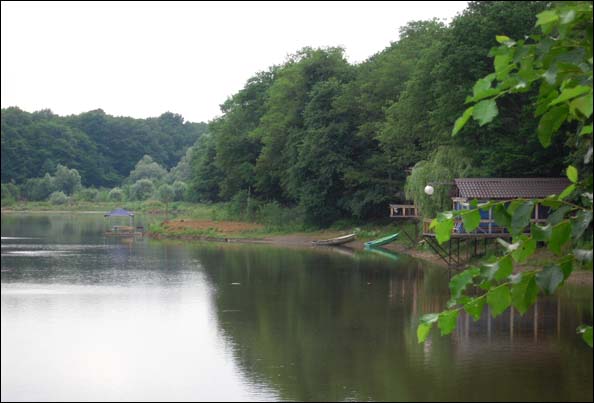
Address: the old bed of the Kuban River in the village of Dzhiginka between the cities of Temryuk and Anapa.
Coordinates: 45°8′46″N (45.146032) 37°18′48″E (37.313331)
There is a comfortable guest house for accommodation; there is even a fireplace on the ground floor. You can also stay in a wooden cottage.
You can fish both in the pond and in the canals. Bait can be bought on site, tackle, and a boat can be rented.
There is a lot of entertainment for family holidays - horseback riding, paintball, canal rafting, quad biking and even multi-day routes for tourists. “Kubansky Khutor” is truly a piece of paradise where avid fishermen can get a worthy trophy.
A reservoir is... The largest reservoirs in the Krasnodar Territory
The photo below gives a clear idea of what the reservoir is. This is an artificial (man-made) hydrological object created for the purpose of accumulating fresh water. They are river or lake.

The water accumulated in such reservoirs is used for a variety of needs: municipal, industrial, agricultural. Some reservoirs are created solely for recreational purposes.
It is known that the first artificial reservoir in the world was made by the hands of the ancient Egyptians (in the 3rd millennium BC). The purpose of its creation was the economic development of lands in the Nile Valley. The first reservoir in Russia was built in the Urals back in 1704. Today, hundreds of man-made lakes of different sizes have been created within the country. And among them, the reservoirs of the Krasnodar Territory occupy an important place. The names of the largest of them are: Krasnodar, Shapsugskoe, Kryukovskoe and Varnavinskoe.
It is worth noting that the creation of such objects radically changes the local landscape and greatly affects the microclimate, flora and fauna of the territory. If a reservoir is built on a large river, then changes in its hydrological regime are noticeable over hundreds of kilometers along the riverbed. Water temperature, ice conditions, current speed change, and the height of wind waves increases.
All reservoirs of the Krasnodar Territory: names and their sizes
Within the Krasnodar Territory there are nine reservoirs. Their water is used to generate electricity, irrigate agricultural fields, and supply water to cities and towns. The coastline of these reservoirs is an excellent place for short-term recreation for residents of the region.
All reservoirs in the Krasnodar Territory are listed below. The list also contains information on the total area of the water surface of reservoirs:
- Krasnodar reservoir (area - 420 square kilometers).
- Shapsugskoe (46 square kilometers).
- Varnavinskoe (45 square kilometers).
- Kryukovskoe (28 square kilometers).
- Takhtamukayskoe (9.5 square kilometers).
- Oktyabrskoye (9 square kilometers).
- Shendzhiyskoye (7.8 square kilometers).
- Neberdzhaevskoe (0.76 square kilometers).
- Maykop (0.5 square kilometers).
Krasnodar Reservoir is the largest in the region
The so-called Kuban Sea is the largest reservoir in the entire North Caucasus. Its total area is 420 square kilometers. The length of the reservoir is 45 kilometers, and the maximum width is 15. The depths here reach 15-20 meters.
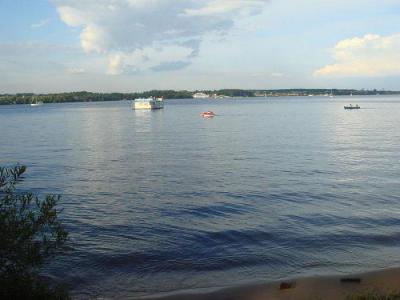
The idea to create a huge man-made lake in this place came to Soviet engineers in 1967. Eight years later it was brought to life. During the filling of the reservoir, about two dozen villages went under water. Most of the local residents were resettled to the new city of Adygeisk.
Today, a popular version among Krasnodar residents and residents of the region is that the reservoir is located on one of the tectonic faults. And this, in turn, threatens to flood vast areas. In fact, this is just a myth that has no scientific basis.
On the banks of the reservoir, many recreation centers have been created for fishermen, hunters and ordinary vacationers.
Slavyansky district
Fishing and hunting base "Azovskie plavni"
Address: Stavki village
There are comfortable cottages for guests. You can fish in large, clean reservoirs, on boats, or on specially equipped bridges. Boat rentals are available. A fish refrigerator is located in the room. The kitchen is shared and has everything for cooking.
Recreation center "Kapustyannaya"
Address: Novomyshastovskaya village.
Coordinates: 45°13'13.66N 38°32'20.82E.
Accommodation in rooms for 5-7 people. For convenience, there are special piers from which it is convenient to fish. From the pond you can catch carp, carp up to 8 kg, and grass carp. On the territory there is a buffet, barbecues, and a place to store the catch. You will have to get to the base on gravel. There is no equipped parking in the yard.
Recreation center "Mayevskie Prudy"
Address: Mayevsky farm.
Coordinates: 45°9'58.28N 38°11'2.08E.
Six ponds overflowing with fish. The most common species are carp, amur, and crucian carp. You can fish around the clock, and if necessary, you can even rent a boat and equipment. There are comfortable bridges and gazebos. Accommodation in a hut or a house for 6 people, or in double rooms.
Varnavinskoye Reservoir
Varnavinskoye Reservoir in the Krasnodar Territory is the third largest in this region. It is located ten kilometers northeast of the city of Krymsk. The reservoir was built and launched in 1971. The reservoir stretched almost eleven kilometers in length.
Several villages with poetic names are comfortably located on its shores: Yuzhny, Chernomorsky, Sadovy, Mova... Local residents love and take care of their artificial “sea”.
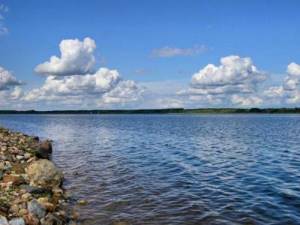
Varnavinskoye Reservoir is considered a Mecca among fishermen in the region. It is here that the V. Popov Cup for float fishing is held annually.
Kanevsky district
Country Club “Away from Wives”
Address: near the station. Free. The shore of the Gorky Estuary.
Coordinates: N 46 degrees 10.013″ E 038 degrees 37.618″
The road is asphalted. Accommodation in rooms for 2-5 people. There is a shared kitchen for preparing meals. There is a place to store fish. On the territory there are gazebos, barbecues, and canopies. You can rent a boat and gear. You can fish from the shore; bridges are equipped. Upon request, they can clean and cook caught fish.
Kryukovskoye Reservoir
The Kryukovskoye Reservoir in the Krasnodar Territory can perhaps be called one of the most picturesque in the region. It is located west of Krasnodar, near the village of Lvovskoye.
The reservoir was put into operation in 1972. It was created so that it was possible to regulate floods on local rivers, as well as for the purpose of irrigating local arable land. In the near future, reconstruction of the reservoir is planned, providing for strengthening its banks and increasing the dam.

Features of fishing in the reservoirs of the Krasnodar Territory
On the reservoirs of the region you can not only fully relax after hard working days, but also have good fishing. Fishing, as you know, is a great way to relax and gain new vitality. And the numerous fresh reservoirs of the Krasnodar Territory are an excellent place for this purpose.
Here you can find crucian carp, carp, carp, ram, tench, pike, catfish and other types of fish. You can fish in the Krasnodar Territory all year round, with the exception of the period from March 1st to May 31st.
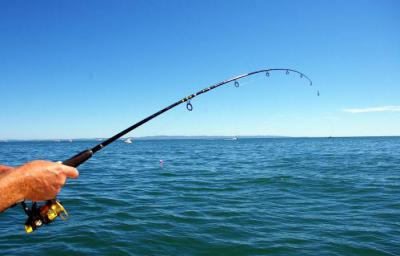
Before you go fishing in one of the region’s reservoirs, you should study as much information as possible about it. This will help you choose a suitable place and select the necessary gear.
Catch a fish or where to get a catch?
Summer, warm, sunny. I want to relax, and in a useful way. Then why not go to the Krasnodar region? After all, this is a godsend for any fisherman; in this area there is a deep-flowing Kuban River, estuaries, lakes, and seas. There are dozens of fisheries and bases for catching fish.
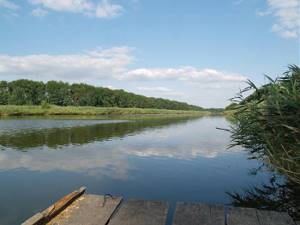
What is better - paid or free?
There are plenty of places where you can go fishing. Let's say it's some kind of wilderness. But it’s far from a fact that in such a place there will be good fish that you won’t be ashamed to show off to your friends.
Most likely, the “good people” pulled out everything they could with their nets. Therefore, it is better to go to paid reservoirs, specially cleaned, with baited fish. Where can you find them in the Krasnodar region? This article will tell you about this.
